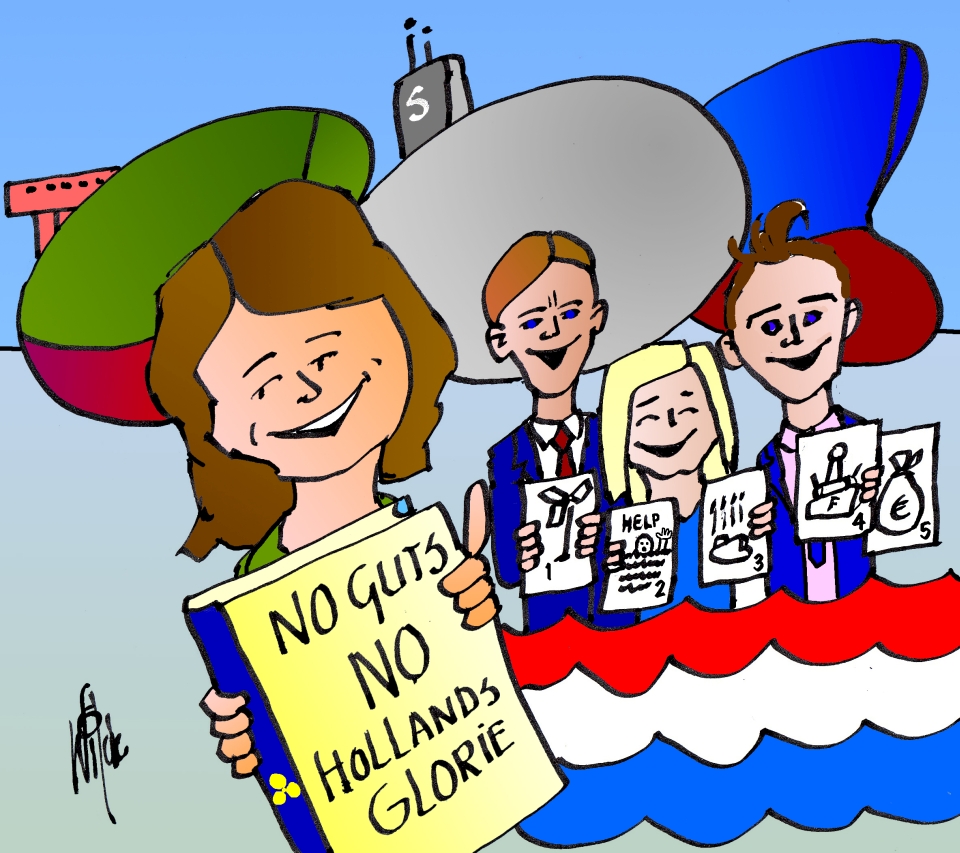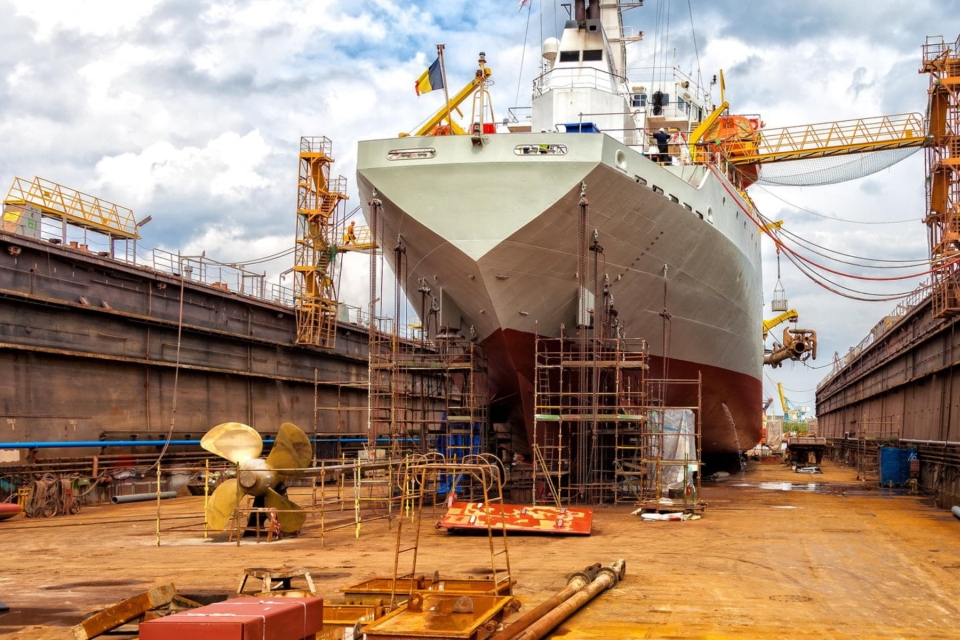From the magazine – It is a beautiful, appealing, because ambitious title given to the Maritime Manufacturing Industry Sector Agenda. “No Guts, No Dutch Glory” certainly sounded promising at the presentation on Thursday 26 October at the RDM Werf in Rotterdam-Heijplaat: shipbuilding as the first Dutch sector for which industrial policy is being developed again.
In every issue of SWZ|Maritime, SWZ|Maritime’s editor-in-chief Antoon Oosting writes an opinion piece under the heading “Markets” about the maritime industry or a particular sector within it. In the November 2023 issue, he discusses how the new Dutch Sector Agenda is the basis for new industrial policy for the maritime sector.
Indeed, the sector can rejoice that, after decades of being neglected and ignored, there is now finally political recognition of its strategic importance again.
Together as government and business taking action for a safe, sustainable and prosperous Netherlands. A great challenge. But despite all the fine plans included in this Sector Agenda, two major uncertainties still hang over its future. Firstly, the outcome of the parliamentary elections on 22 November and the overall financial-economic policy to be pursued in the future, and secondly, how to improve the problematic financing of shipbuilding.
Also read: Dutch govt and sector put EUR 60 million in innovative shipbuilding
Seven months
Initially, much less time was allotted, but in the end it took seven months before the final report arrived. Under the leadership of Marja van Bijsterveldt, the government’s Maritime Manufacturing Industry Envoy, who was appointed partly because of her Rotterdam entrepreneurial background and who is also the Mayor of Delft and a former State Secretary and Minister of Education, officials from the Ministries of Economic Affairs and Climate Policy, Infrastructure and Water Management, Defence, Foreign Trade and Development Cooperation and Finance produced a hefty report.
They travelled all over the Netherlands to see for themselves what the maritime sector represents. The Nederland Maritiem Land Foundation, industry association Netherlands Maritime Technology, research institute MARIN and the Royal Association of Netherlands Shipowners (KVNR) were invited to contribute. The Agenda should provide an answer to requests from the government and parliament for a more active and greener industrial policy with an integrated policy for the maritime manufacturing industry and strengthening and protecting regional shipbuilding clusters.

In the accompanying letter to parliament, signed by Minister of Economic Affairs and Climate Policy Micky Adriaansens, Minister of Infrastructure and Water Management Mark Harbers and State Secretary of Defence Christophe van der Maat, the responsible ministers note that the agenda is a first step towards a future-proof maritime manufacturing industry. ‘What matters now is that politics, government and industry together energetically take up the implementation of the agreed actions and front-runner projects.’
The government is therefore setting up a National Maritime Manufacturing Industry Agency (Rijksregiebureau Maritieme Maakindustrie) that will be responsible for implementing the Agenda.
Four pillars of the economy
According to the ministers, the broadly supported Sector Agenda gives substance to a more active and green industrial policy. The starting point for this is the policy framework for the Dutch economy presented earlier by the government and which is built up around four pillars: innovative (1), sustainable (2), strong Netherlands in a resilient Europe (3) and benefiting society (4).
The maritime manufacturing industry is the first sector to which the new framework has been applied and a concrete example of how active industrial policy can be shaped. Together with the sector, for instance, the government is making a total of EUR 60 million (each will provide half) available for innovation.
In doing so, the government and the sector focus on smart solutions that address the social urgencies of our time on the one hand and strengthen the earning capacity of the Netherlands on the other.
Implementation and processing of the other financial consequences associated with the measures will take place, among other things, in the Spring Memorandum or by the next cabinet. After the 22 November elections, a new House of Representatives and a new cabinet will be installed. The question is whether these will still think the same about a new industrial policy to be implemented. Given the broad support in the current parliament, a totally new economic policy is not to be expected, but neither is it excluded.
Also read: ‘It took a war to put Dutch shipbuilding back on the agenda’
Problematic financing
The second, much more problematic, uncertainty is the financing of future shipbuilding. Banks have almost completely withdrawn from shipbuilding. If they do anything at all, it is only for a few dozen per cent of what an investment in a newbuilding ship really requires. In her speech at the presentation of the Sector Agenda, Van Bijsterveldt herself noted that financing in the Netherlands is the ‘toughest problem’: ‘We have to pick up where banks have pulled out.’
Like almost no other, the maritime sector faces global competition especially from Asia. This creates price pressure and pressure on profit margins. Anyone who is somewhat familiar with shipbuilding knows that developing innovative, sustainable projects is also very risky. In the past decade, several Dutch shipyards went bankrupt (Barkmeijer, De Hoop) or were kept afloat with government support (Royal IHC). According to the Sector Agenda, this has contributed to Dutch banks withdrawing from shipbuilding, as well as because of stricter banking regulations.
Capital-intensive sector
The Sector Agenda further notes that the sector is capital-intensive. Yards are therefore dependent on financing and guarantees. Lack of liquidity among yards and the cyclical nature of the shipbuilding market create financial challenges. The market also needs additional capital to meet climate targets. Ships that emit less CO2 are simply more expensive than traditional ones.
This transition to “greener” ships puts additional pressure on companies because developing or buying innovative systems requires additional time and capital. In addition to newbuilding, existing ships also need to be fitted with more sustainable technologies (retrofits). To achieve these ambitions, specific bottlenecks need to be resolved, according to the Sector Agenda. In terms of financing, the compilers identify bottlenecks in the areas of: contracts, working capital and guarantees (1), hedging sustainability risks (2) and fiscal shipping regulations (3).
Also read: ‘And now we could also lose short sea shipbuilding to Asia’
Regulation drives inflation
The problem of unfair competition from Asia is touched upon, but the responsibility of politics and government for this is not. This involves the cost-increasing effects of all government policies and new regulations. Of course, it is a fact that there is a lack a level playing field resulting in distortion of competition.
Countries like China influence steel prices, have low labour costs and more favourable financing conditions. These are the three main components that determine the price of a ship. As a result, the price difference can add up substantially to as much as forty per cent.
But then, of course, it does not help when politicians insist on a significantly higher minimum wage. The effects of this on the overall wage structure in the metal industry, which includes shipbuilding, are far-reaching and lead to substantial cost increases. Instead of allowing wages to rise, politicians could instead try to reduce the burden on citizens and businesses for once.
Dangerous trend
Incidentally, Van Bijsterveldt pointed out another, dangerous trend in politics. ‘An image seems to be emerging that the Netherlands can say goodbye to large industrial companies,’ the Maritime Manufacturing Industry Envoy said. She is, of course, referring in particular to companies like Tata Steel. Polluting, but crucial for the metal processing industry in Europe.
Van Bijsterveldt finds the idea that we can do without such companies ‘disturbing’. According to Van Bijsterveldt, developing broad prosperity in the Netherlands requires us to be careful with small and medium-sized enterprises as well as larger companies.
Also read: Europe’s large shipbuilding in dire straits
Five challenges
The Sector Agenda itself identifies five major challenges for the Netherlands:
- As a country, being able to independently maintain and protect the vital offshore infrastructure of wind farms and data cables.
- Climate adaptation, adapting our country to counter the dangers of sea level rise and flooding.
- Energy transition through the construction of offshore wind farms and greening of shipping.
- Military security by strengthening the Royal Netherlands Navy.
- Earning capacity, ensuring that our income in the maritime sector is maintained.
The Sector Agenda outlines 25 measures and solution directions with five front-runner projects:
- Implementation of the Maritime Master Plan with forty climate-neutral demonstration ships.
- The Yard of the Future.
- Smart Maritime.
- Robotic wind at sea.
- Nuclear propulsion of ships.
I am very curious to see what this will yield.








